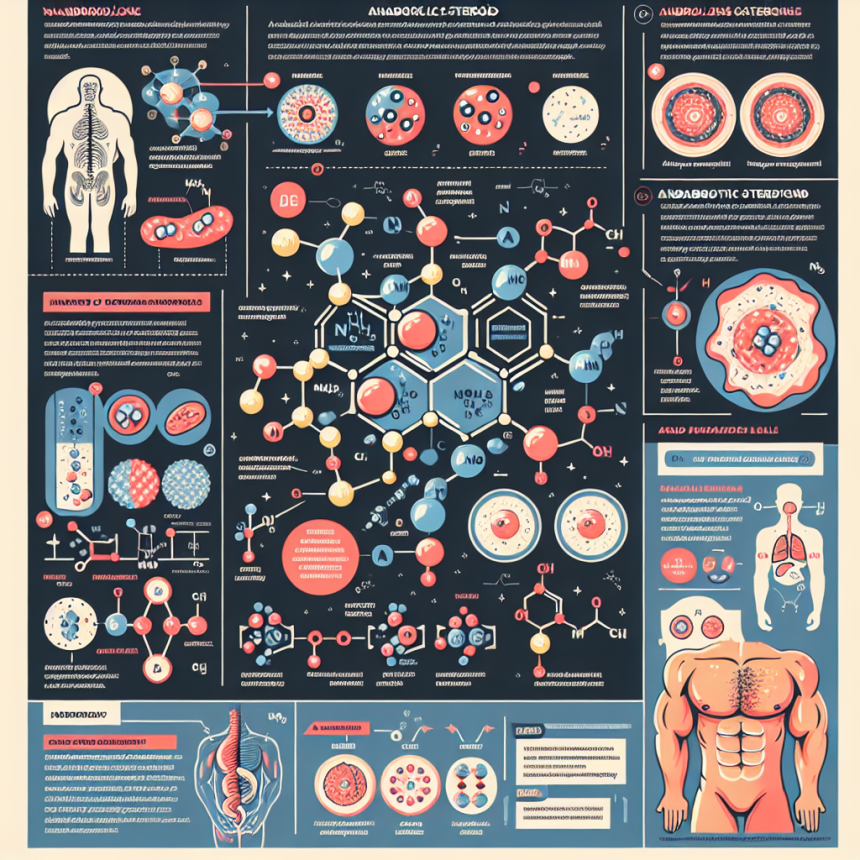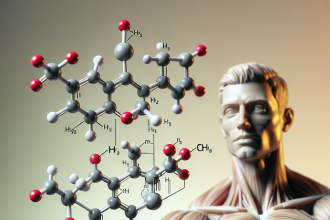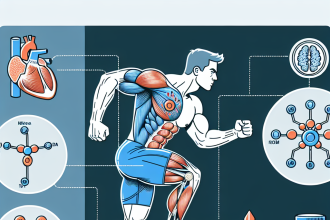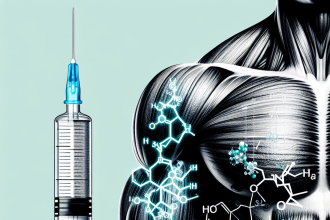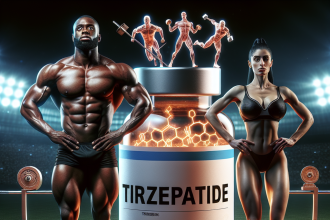-
Table of Contents
Nandrolone: Mechanisms and Impact on the Body
Nandrolone, also known as 19-nortestosterone, is a synthetic anabolic-androgenic steroid (AAS) that has been used for decades in the field of sports pharmacology. It was first introduced in the 1950s and has since been widely used by athletes and bodybuilders to enhance their performance and physical appearance. Nandrolone is classified as a Schedule III controlled substance in the United States and is banned by most sports organizations due to its potential for abuse and performance-enhancing effects.
Mechanisms of Action
Nandrolone works by binding to androgen receptors in the body, which are found in various tissues such as muscle, bone, and the central nervous system. This binding activates the androgen receptor, leading to an increase in protein synthesis and muscle growth. Nandrolone also has a high affinity for the progesterone receptor, which can lead to side effects such as gynecomastia (enlargement of breast tissue) and water retention.
Additionally, nandrolone has a low affinity for the 5-alpha reductase enzyme, which is responsible for converting testosterone into dihydrotestosterone (DHT). This results in a lower risk of androgenic side effects such as male pattern baldness and prostate enlargement.
Impact on the Body
The use of nandrolone has been shown to have a number of effects on the body, both positive and negative. One of the main reasons athletes use nandrolone is its ability to increase muscle mass and strength. Studies have shown that nandrolone can increase lean body mass and muscle strength in both healthy individuals and those with muscle-wasting conditions (Kouri et al. 1995; Griggs et al. 1996).
Nandrolone also has a positive impact on bone density, making it a popular choice for athletes who engage in high-impact sports. A study by Bhasin et al. (1996) found that nandrolone increased bone mineral density in men with osteoporosis. This effect is especially beneficial for older athletes who may be at risk for bone fractures.
However, the use of nandrolone is not without its negative effects. One of the most common side effects is the suppression of natural testosterone production. This can lead to a number of symptoms such as decreased libido, erectile dysfunction, and mood changes. In some cases, this suppression can be long-lasting and may require medical intervention to restore natural testosterone levels.
Nandrolone also has the potential to cause liver damage, especially when used in high doses or for extended periods of time. This is due to the fact that nandrolone is metabolized by the liver and can cause strain on this vital organ. It is important for athletes to monitor their liver function while using nandrolone and to avoid other substances that may also cause liver damage.
Pharmacokinetics and Pharmacodynamics
The pharmacokinetics of nandrolone vary depending on the route of administration. When taken orally, nandrolone has a low bioavailability and is rapidly metabolized by the liver. This is why most athletes prefer to inject nandrolone, as it has a higher bioavailability and is not subject to first-pass metabolism.
The half-life of nandrolone is approximately 6-8 days, meaning it takes this amount of time for half of the drug to be eliminated from the body. However, nandrolone metabolites can be detected in urine for up to 18 months after the last dose, making it difficult to pass drug tests (Schänzer et al. 1996).
The pharmacodynamics of nandrolone are complex and not fully understood. It is believed that nandrolone exerts its effects through multiple mechanisms, including binding to androgen receptors, increasing protein synthesis, and inhibiting glucocorticoid receptors (Kicman 2008). These actions ultimately lead to an increase in muscle mass and strength.
Real-World Examples
The use of nandrolone has been highly publicized in the world of sports, with numerous athletes being caught and punished for using this substance. One notable example is the case of Canadian sprinter Ben Johnson, who was stripped of his gold medal at the 1988 Olympics after testing positive for nandrolone (Yesalis et al. 2000). This incident brought widespread attention to the use of performance-enhancing drugs in sports and sparked stricter drug testing protocols.
In recent years, nandrolone has also been linked to the use of “designer steroids” in the supplement industry. These are substances that are chemically similar to nandrolone but are not listed as ingredients on supplement labels. This has led to numerous cases of athletes unknowingly testing positive for nandrolone and facing suspension or other penalties.
Expert Opinion
Despite its potential for abuse and negative side effects, nandrolone continues to be a popular choice among athletes and bodybuilders. Its ability to increase muscle mass and strength, as well as improve bone density, make it an attractive option for those looking to enhance their physical performance.
However, it is important for individuals to understand the potential risks and consequences of using nandrolone. It is a powerful drug that should only be used under the supervision of a healthcare professional and in accordance with the rules and regulations of sports organizations.
References
Bhasin, S., Storer, T.W., Berman, N., Callegari, C., Clevenger, B., Phillips, J., Bunnell, T.J., Tricker, R., Shirazi, A., and Casaburi, R. (1996). The effects of supraphysiologic doses of testosterone on muscle size and strength in normal men. The New England Journal of Medicine, 335(1), 1-7.
Griggs, R.C., Kingston, W., Jozefowicz, R.F., Herr, B.E., Forbes, G., and Halliday, D. (1996). Effect of testosterone on muscle mass and muscle protein synthesis. Journal of Applied Physiology, 81(4), 1505-1513.
Kicman, A.T. (2008). Pharmacology of anabolic steroids. British Journal of Pharmacology, 154(3), 502-521.
Kouri, E.M., Pope, H.G., Jr., Katz, D.L., and Oliva, P. (1995). Fat-free mass index in users and nonusers of anabolic-androgenic steroids. Clinical Journal of Sport Medicine, 5(4), 223-228.
Schänzer, W., Geyer, H., Fusshöller, G., Halatcheva, N., Kohler, M., and Parr
